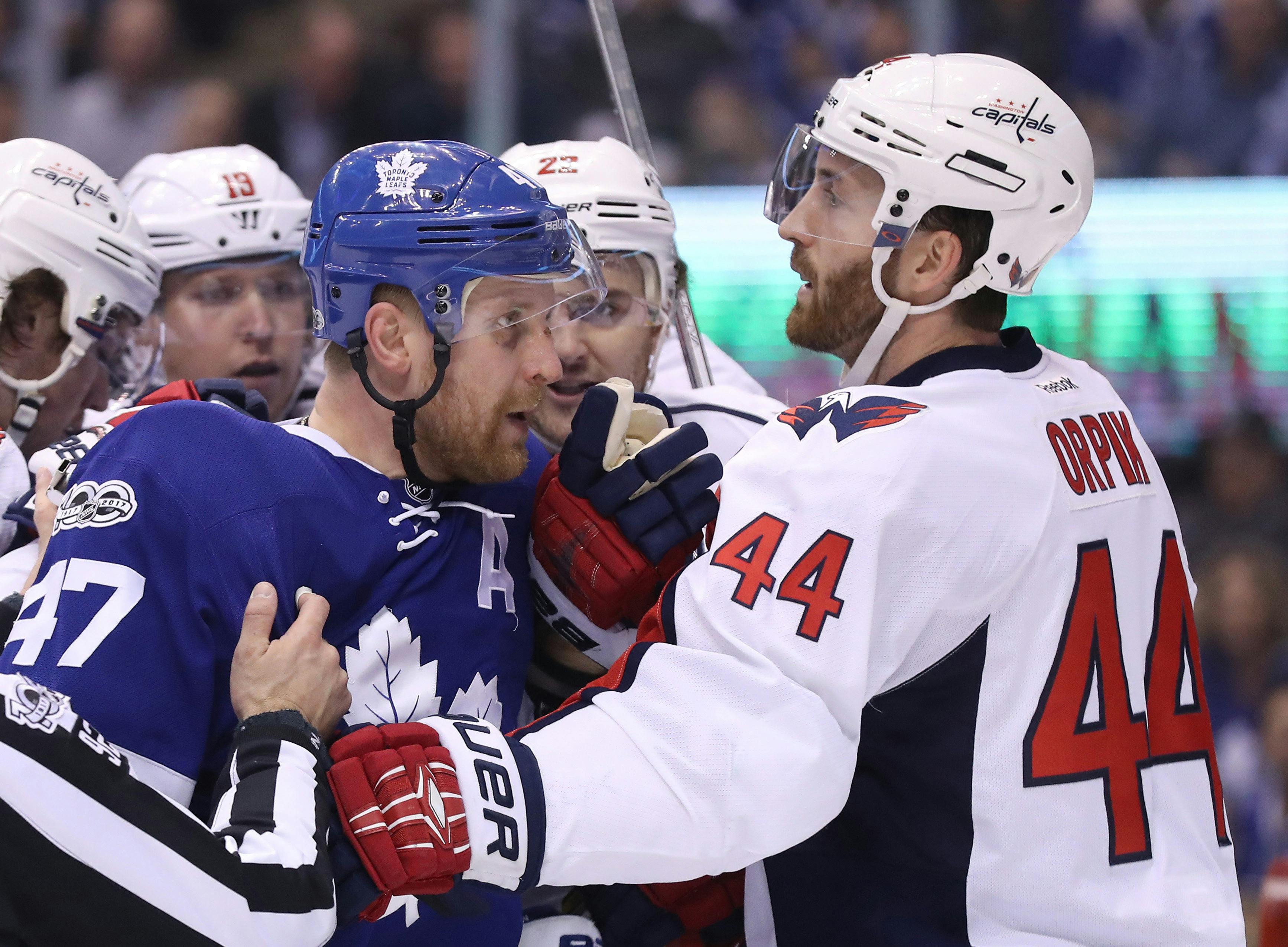2016-17 Leafs Season In Review: Leo Komarov

By Ryan Hobart
6 years agoLeo Komarov features as our second Year In Review piece this week, where yesterday Jeff Veillette took a look at Ben Smith’s 2016-17 season. This is Komarov’s 3rd full season with the Maple Leafs, 4th when you count the half season he played in 2012-13 because of the lockout. Today we’re going to talk about what Leo’s strengths and weaknesses are, and then take a look at how he might fit in in the future.
Komarov almost the entirety of this season on the shutdown line with Nazem Kadri and Connor Brown. He also, as always, played a huge role on the penalty kill throughout the year. A trade chip a year ago, Komarov has seen his value on the market drop significantly as his ability to produce points has diminished, but that doesn’t mean his value to the Leafs has diminished at all.
Strengths
The Leafs’ current forward core features an abundance of talented offensive players, but Komarov stands essentially on his own as a defensive specialist on forward.
Using DTMAboutHeart’s GAR model, in 2016-17 Leo Komarov has a Goals Above Replacement of 8.6, good for 117th in the league, 85th among forwards. That places as a first line forward, as with 31 NHL teams, there should be 93 forwards playing on the first line. This is pretty nice.
Looking just at defensive impact, however, Komarov is at 6 EVD (or even strength goals “prevented”) which is the 5th best forward in the league. That is an impressive feat. The only other Toronto forward anywhere near Komarov is Brian Boyle, and even he has less than half of the defensive impact Komarov gave the Leafs.
Since GAR is an all-encompassing model, it is tricky to highlight particular strengths out of it. However, we know that a large source of Komarov’s positive impact would be his physicality and his coverage and awareness in the defensive zone.
Leo is also a noted leader in the dressing room, as Babcock has chosen to indicated by giving him an A on his jersey for parts of this year. Good, personable leaders may have a limited impact on the ice, but having a valuable role player be likeable and willing to push for every inch of ability out of his teammates can’t be a bad thing.
Weaknesses
Obviously, since offensive ability wasn’t mentioned in the above section on strengths, it follows that one of Komarov’s key weaknesses is a lack of ability to score. He did add 1 GAR on the powerplay, but at even strength his GAR was just 0.2, meaning he’s essentially a replacement-level offensive player. This is not ideal, of course.
In his All-Star year, he scored 19 goals and 36 points, but almost all of that coming before the All-Star break (he and the rest of the team rode the 18-wheeler off a cliff offensively). He followed that up this year with 14 goals and 32 points, but this time instead of being 3rd on the team in points, he was 10th. He didn’t improve, but he also didn’t regress nearly as much as many would think. He simply didn’t have as much of a contribution to the team’s total offence — his offence was about the same.
Komarov also struggled a bit with drawing penalties, having a -0.2 GAR impact there. Given his pesty nature, that’s not ideal to see him take more penalties than causing the other team to draw.
Looking Ahead
Despite his mediocre offensive ability, GAR-wise Leo is still at least a top 6 forward. He is getting up there in age (he turned 30 this past January), but he can still play a valuable role within this organization.
It wouldn’t be unreasonable to offer a short-term extension to Komarov to have him as a support-type winger that Babcock loves to have. He can be like our Justin Abdelkader, but since we don’t have Ken Holland as our GM, we can get him on a reasonable term. Say 2-3 years at around $3.5M. Komarov is an important piece to balance the high offence, not-so-great defence player the Leafs are stocking up on in the top ranks of their lineup. He could even play a role as the 4th line center in between two high scoring young wingers like Kapanen and Leipsic, as an example.
Keeping Leo Komarov around as a utility forward seems like a very good idea, as long as the contract is manageable.
Recent articles from Ryan Hobart





